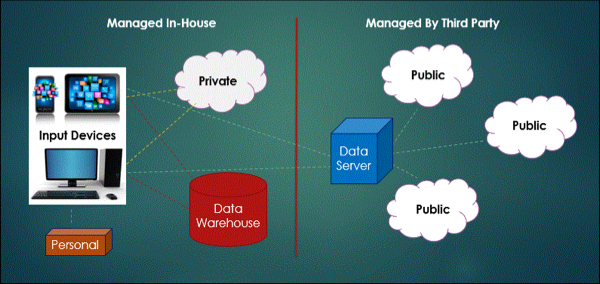
It is believed that the cloud is currently a large computing channel, but its meaning is pretty good for most people. On the other hand, Google cloud storage is considering a universal storage platform for businesses that can host large unorganized databases. However, businesses may purchase storage space for basic data or rarely access data. It provides shared storage for active or archived data. Items stored in Google’s cloud storage are sorted into segments.
Cloud computing means using the power of the Internet to do the outsourcing work you could normally do on a computer – from simple storage management to complex development and processing – to a large and powerful remote network of connected machines. It is good for a free user who has had enough of freeing up hard drive space or buying new storage.
What is Google Cloud Storage?
It is considering as a communal storing facility – which is providing by Google – Cloud. However, it offers great ready-made features that can facilitate development and reduce operating costs. The concept of keeping things is not so easy to understand. In typical website systems with limited capacity and fast and limited links, this type of storage is not common. However, how storage object works – is very easy for users. Simply put, it values that you can get and install all the files you want via the REST API – and it can expand indefinitely as each item reaches the terabyte scale. Interesting, isn’t it? In the cloud trade, different units are sorted into unique “namespaces” called segments. A bucket can contain several things; one bucket has only one thing.
This storage model is very popular in cloud systems due to its low cost, as well as wireless access and simplicity. Then a lot of work is done in terms of data duplication, availability, integrity, organizational capacity, etc. It is left to the company in the cloud. The downside of object memory is that there is no other way to access data other than the REST API; therefore, the classical approach to system design, data management, and document system structure is as accessible as the approach.
In a cloud, the hardware can’t be physically touched, but you can control it a bit via the web interface. However, virtual machines are created using software that divides the computing power, memory, and storage space of a particular machine into several smaller units, each with its operating system. This virtualization enables the efficient sharing and distribution of cloud computing resources.
In a matter of fact, cloud comparisons essentially create a lot of copies of the data you download and deliberately store them in different places to ensure they are not destroyed or inaccessible when a disaster becomes the center. However, the physical location of this stored data is not important to most because it can be collected almost instantly via the Internet.
Google – Cloud – Storage Classes, and Lifecycle – Management Rules
Perhaps the most valued features of Google Cloud Storage are the different storage categories and the application of lifecycle data management policies. Using these features can significantly change overheads and running costs.
Storage Classes
It is believed that one has to choose the storage category for the segment among Standard, Near-line, or Cold-line. The usual approach is to choose Standard, where you can place your bucket in one specific Google region in the cloud or store it in multiple regions. It works well in a variety of situations when you have high efficiency and very affordable storage space.
However, there are cases where the data is not intended for availability and limited obtainability is perfectly acceptable. Near-line can easily reduce costs by more than 50% compared to the conventional storage category. An example of usage cases for Near-line is data used only to compile a complete monthly report. All the same, Cold-line is supposed for the data that is considered to consume even less frequently – consider once a year or less. Therefore, this storage category is especially useful for storage.
Lifecycle Management Rules
If you use Google Cloud storage to store an application file, you may need a large amount of data in the first month and a possible reduction in deliveries over the next six months and, due to irregularities. This is a great built-in Google Cloud Storage feature that lets you easily define business logic rules. These rules allow you to define actions that automatically move items between different storage categories, disable publishing, or even delete items after certain intervals. At the end of the month, real tangible savings can be made in exploiting these features and implementing lifelong policies.
How Safe Is The Cloud?
The cloud may allow us to mitigate the growing need to store data, but how do we know that our data is truly secure when we move into the cloud? To ensure the security of your data so that no one else can access it, the cloud system uses authentication procedures such as usernames and passwords to restrict access and encrypt the data to protect it. However, one can still hack passwords; your service provider often has keys to encrypt your data, which means that dishonest employees can access it.
And your data is not free from state search. For organizations that use the cloud for sensitive data, it is crucial to obtain Google cloud certifications to understand where the data is going and which confidentiality and privacy laws are going in these places. So – to believe or not? Smart internet users are advised to store something that is truly delicate behind their computer or private firewall in the cloud and never transfer it to the public cloud.
Companies have also purchased IT infrastructure based on what they deemed necessary now and in the years to come. All the same, cloud computing allows companies to run vital and online applications, saving them time, space, effort, and a lot of money. However, the cloud is also very flexible.





